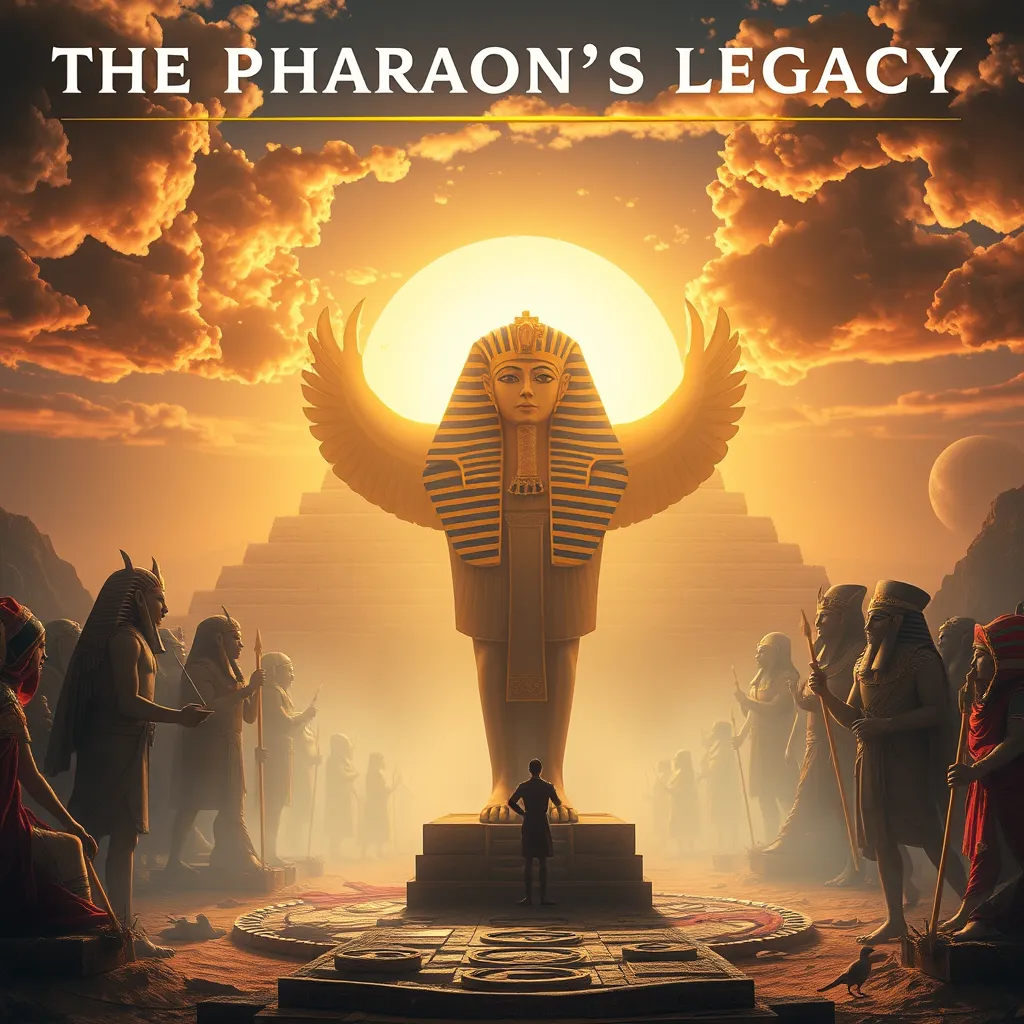The Pharaoh’s Legacy: The Divine Right to Rule and the Burden of Power
I. Introduction
The Pharaohs of ancient Egypt were not merely rulers; they were seen as divine entities, embodying the connection between the gods and their people. Their role in society was multifaceted, encompassing governance, spirituality, and cultural leadership. The concept of divine right, wherein the Pharaoh was believed to be chosen by the gods to rule, carried significant implications for both leadership and accountability.
This article aims to explore the duality of power and responsibility inherent in the Pharaoh’s rule, examining the historical context, the responsibilities they bore, the challenges they faced, and their enduring legacy in art and culture.
II. Historical Context of Pharaohs
The emergence of pharaonic rule dates back to the early dynastic period around 3100 BCE, when Narmer (also known as Menes) unified Upper and Lower Egypt. As the first Pharaoh, he set the foundation for a system of governance that intertwined political authority with religious significance.
Throughout history, several key dynasties contributed to the evolution of divine kingship:
- The Old Kingdom (c. 2686–2181 BCE), known for the construction of the pyramids.
- The Middle Kingdom (c. 2055–1650 BCE), which witnessed a renaissance in art and literature.
- The New Kingdom (c. 1550–1070 BCE), a period of military expansion and international diplomacy.
Religion and politics were deeply intertwined in ancient Egypt, with Pharaohs often depicted as gods on earth, reinforcing their authority and the concept of divine right.
III. The Divine Right to Rule
Central to the Pharaoh’s authority was the concept of ma’at, representing truth, balance, order, and justice. The Pharaoh was seen as the embodiment of ma’at, responsible for maintaining cosmic order and ensuring harmony within the kingdom.
As a mediator between the gods and the people, the Pharaoh performed essential rituals and ceremonies to invoke divine favor. These included:
- The Opening of the Mouth ceremony, which was believed to awaken the deceased in the afterlife.
- Annual flooding rituals that celebrated the Nile’s inundation, crucial for agriculture.
- Festivals honoring the gods, reinforcing the Pharaoh’s role as the chief priest.
Such rituals reinforced the Pharaoh’s divine authority, establishing a direct link to the gods and legitimizing their rule.
IV. The Responsibilities of Power
The responsibilities of the Pharaoh extended beyond spiritual leadership to encompass governance, economic management, and military oversight.
Key areas of responsibility included:
- Governance and Administration: The Pharaoh oversaw a complex bureaucracy that managed everything from tax collection to public works.
- Economic Management: Ensuring the prosperity of the kingdom required effective resource distribution and management of agricultural output.
- Military Leadership: The Pharaoh was the supreme commander of the army, responsible for defending the kingdom against external threats and expanding its borders.
V. The Burden of Power: Challenges Faced by Pharaohs
Despite their divine status, Pharaohs faced numerous challenges that tested their leadership and authority.
- Internal Strife: Political intrigue and power struggles among the nobility could destabilize the kingdom.
- Natural Disasters: Events such as droughts or floods could lead to famine or economic decline, placing immense pressure on the Pharaoh to respond.
- Public Expectations: The populace and nobility held high expectations for the Pharaoh to maintain prosperity and security, leading to discontent if these were unmet.
VI. The Legacy of Pharaohs in Art and Culture
The legacy of the Pharaohs is vividly captured in Egyptian art and architecture. Monumental structures like the Great Pyramid of Giza and the temples of Karnak stand as testaments to their power and divine connection.
In addition to architecture, literature and mythology surrounding pharaonic rule also flourished. Tales of gods and goddesses, as well as stories of the Pharaohs themselves, have been passed down through generations, shaping cultural narratives.
The lasting influence of Pharaohs extends into modern perceptions of leadership, often viewed through the lens of authority and divinity.
VII. The Decline of Pharaonic Power
Over time, various factors contributed to the weakening of the Pharaoh’s authority. These included:
- Foreign Invasions: The conquests by foreign powers, such as the Assyrians and Persians, undermined traditional authority.
- Internal Dissent: Civil wars and uprisings among the nobility challenged the central authority of the Pharaoh.
- Transition to New Governance: The eventual decline of pharaonic power led to the rise of other forms of governance, including Greek and Roman rule.
VIII. Conclusion
The legacy of the Pharaohs encapsulates the profound duality of divine right and the burdens of leadership. Their rule was marked by a complex tapestry of power, responsibility, and the ever-present challenges of governance.
Even today, the influence of the Pharaohs endures, reminding us of the intricate balance between authority and obligation in leadership. The lessons learned from their reign continue to resonate, offering insights into the nature of power and the responsibilities it entails.




